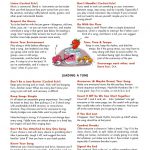Manners
Listen (Cardinal Rule!)
Music is communal. Blend in. Instruments can be louder than you think because they point away from your ears. Be sensitive, and play softly behind vocals, guitars, and other quiet instrumental breaks.
Respect the Genre
Try to be familiar with the jam genre—bluegrass, old time, blues, jazz, etc.—so you can have more fun, and maybe contribute a song in that genre (see below for leading a song). Don't require folks to learn too much new stuff; familiar tunes help people connect more easily.
Know Your Environment
Play along a while before offering to lead a song. Jam leader(s) can help you grasp what works best with a group—new or old songs, instrumentals, and the level of the jam. It's okay to sit in the back 'til you're comfortable, and it's okay to "pass" when it's your turn.
Don't Noodle! (Cardinal Rule!)
If you need to work out something on your instrument between songs, step away, and do it quietly. Especially if you play a loud instrument, like a banjo! If you're bored and just need to amuse yourself, maybe you're in the wrong place?
Go With the Flow
Whose song is next? There's often a simple directional sequence, which is impolite to interrupt. But if others can't think of a song, and there's a lull, you can suggest one.
Tune, Time & Tempo
Keep in tune, keep the rhythm, and hold the tempo. But if the group strays, you may have to stray along with them to avoid conflict. It's not about being right, but about being part of the community of the jam.
Encourage each other, and have fun. Duh.
Download, Print and Share!

Leading a Tune
Don't Be a Jam Buster (Cardinal Rule!)
Keep jams moving and on track. Stick with low-hanging fruit—familiar tunes! When too many don't know your song a jam will stall, and recovery is difficult.
Keep Songs Simple
It's all about an enjoyable group experience. Your song'll be easier to lead, too. Best picking a 2 or 3-chord song with predictable A-A-B-B structure, or verse-chorus structure. Easy choruses are fun for everyone to sing. Quirky bridges can make folks want to jump off one.
Note the banjo's tuning; it's humane to not change keys every song. Fiddle tunes are almost always in a fixed key, but singers will pick their singing keys.
Don't Be Too Attached to Any One Song
If your choice is met with stony silence or grumbling don't take it personally. Laugh it off, and suggest the more familiar "plan B" that you have in your back pocket.
Know Your Song
Memorize your chord sequence and lyrics, because you'll be teaching the song to some folks. And maybe work out your break in advance. Reading from a songbook shows you don't know your song, and you lose connection with your group, and relationship is what it's about!
Announce (& Maybe Demo) Your Song
Make sure everyone knows the title and key. Review chord sequence and tempo. Nashville Numbers like I – IV – V are great. Say if it's a waltz (3/4), or not 4/4 or 2/4
Count It Off So We Can Start Together
Count off 1 and 2 and, etc… Intro "potatoes" can get everyone on the same page, too. Be careful with pick-ups; they usually take only a fraction of a measure. And count off at the same tempo you're going to play.
If You Get Lost
It happens. Don't break rhythm, but pick up ASAP where the song should be at that point.
Conduct Breaks
Offer everyone a chance to "take a break." Say if it's the verse, chorus, both, or split. Styles of conducting, include calling out names, instruments, or simply going in a circle. But whatever, just make sure to do it. Eye contact is good, especially if someone decides to pass.
Signal the End
The universal "foot in the air" or yelling something clever announces it's the last time around. But if your song has 27 verses it's already over—everyone's getting another beer by about the seventh verse. Join them.